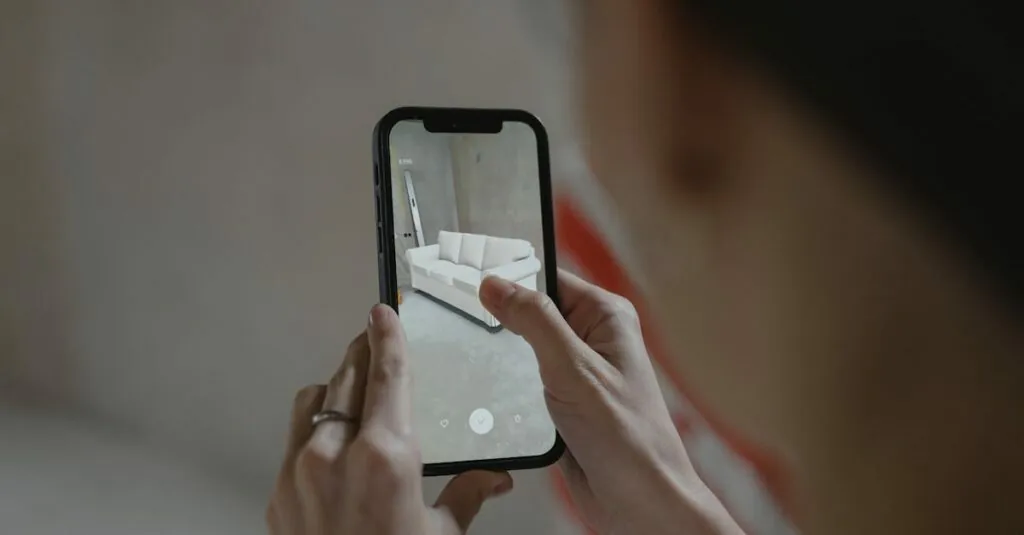Table of Contents
ToggleEver wondered where your friend vanished to after that last brunch? Or maybe you’re curious about how many times your partner has claimed to be “stuck in traffic”? With an iPhone in hand the answers are just a few taps away.
Tracking someone’s whereabouts isn’t just for nosy friends or overprotective partners; it can be a handy tool for keeping tabs on loved ones or ensuring safety. Whether you’re trying to find a lost phone or just want to know if they really did go to the gym, the iPhone has built-in features that can help.
Understanding Location Services on iPhone
Location Services on iPhone enable users to understand where someone has been. This feature utilizes GPS, Wi-Fi, and cellular network data to pinpoint the device’s location in real time.
What Are Location Services?
Location Services refers to the iPhone’s ability to determine the device’s geographic location. It utilizes advanced technologies, including GPS satellites and cellular towers, to deliver precise location data. Users can access location data through various apps, including Maps and Find My Friends. Privacy settings control apps’ access to location services. Users can enable or disable this feature for specific applications based on their preferences.
How Location Services Work
Location Services function by triangulating signals from multiple sources. GPS provides satellite signals, while Wi-Fi networks offer additional location support. Cellular towers improve accuracy by determining how far the device is from nearby towers. When an iPhone communicates with these elements, it calculates the current position. Users can view location history through Settings, under Privacy, then Location Services. It’s essential to keep permissions updated, as tracking depends on user consent.
Checking Location History
To check someone’s location history on an iPhone, users can utilize several built-in features.
Using Apple’s Find My App
Access the Find My app to see the location of family and friends. This app shows real-time locations of devices and people sharing their location. Users can tap on individuals listed to view their current whereabouts. The app provides historical location data if the person has shared their location for an extended period. To find previous locations, users can select the person’s name, then click on “Info” and view recent locations under the “Location History” section. Keeping the Find My app updated ensures the most accurate information.
Using Family Sharing Feature
Set up Family Sharing for tracking family members’ locations more effectively. Family Sharing allows invited members to share their locations automatically. Once Family Sharing is activated, family members can see each other’s locations in the Find My app. To enable this feature, navigate to Settings, select your name, and tap Family Sharing. Ensure location sharing is turned on for all members involved. This method offers a straightforward way to keep track of loved ones while prioritizing privacy settings, allowing members to control when and how their locations are shared.
Third-Party Apps for Location Tracking
Third-party apps provide additional options for tracking location on iPhones. Users can explore several popular applications that enhance location tracking capabilities.
Popular Apps for Tracking Location
Find My Friends ranks as one of the most widely used apps for location sharing. Life360 offers family location tracking with added safety features. Google Maps supports location sharing with friends in real-time. Glympse enables temporary location sharing, making it easy to inform others of one’s whereabouts. Family Locator focuses on family safety and location history.
Privacy Considerations with Third-Party Apps
Privacy concerns surround third-party location tracking apps. Users must grant permissions, allowing apps access to their location data. Transparency in how these apps utilize data is crucial, so researching privacy policies ensures informed decisions. Some apps may collect data for advertising purposes; understanding this helps protect personal information. Regularly reviewing app permissions can promote better privacy management.
Limitations and Privacy Concerns
Location tracking on iPhones presents several limitations and privacy concerns. Users cannot track locations without consent, as Privacy Settings restrict access to location data. Location accuracy can vary due to factors like GPS signal strength and environmental obstacles. Users might experience difficulties in urban areas where buildings obstruct signals or in densely wooded regions.
Limitations of iPhone Location Tracking
Tracking capabilities mainly depend on device settings. Privacy settings can limit shared information, and users may turn off Location Services at any time. Location history retains information only when sharing is enabled, potentially leaving gaps. Real-time tracking may not reflect the most current location, especially if the device is offline or the battery is low. Additionally, third-party apps can introduce issues, as each app has its own permission requirements.
Legal and Ethical Considerations
Legal implications surround unauthorized tracking. Respecting privacy rights is essential, and tracking without permission may violate laws. Consent should always be prioritized when sharing location data. Ethical dilemmas also arise, especially when it comes to trust in personal relationships. Transparency in tracking intentions fosters good communication and mutual respect. Users must navigate these concerns carefully to maintain trust and adhere to legal regulations.
Understanding how to check where someone has been on an iPhone can enhance safety and connectivity among friends and family. With tools like Location Services and various apps, users can easily access location data while maintaining control over privacy settings.
It’s crucial to respect consent and privacy when tracking someone’s whereabouts. By prioritizing transparency and communication, individuals can foster trust in their relationships. Regularly reviewing app permissions and staying informed about privacy policies ensures that tracking remains a responsible and ethical practice. Embracing these practices allows for a balance between safety and respect for personal boundaries.







